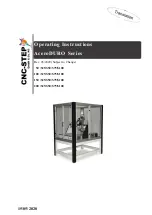
b u s i n e s s
DES-3528/3552
xStack® Managed 24/48-Port 10/100 Stackable L2+ Switch
with 4 Gigabit Copper Ports and 2 Combo SFP Slots
High Performance Switching
+ Stack up to 32 Units per stack using
D-Link® Single IP Management (SIM)
+ Physical Stacking up to 8 Units
1
+ Jumbo Frames up to 9KBytes
Security
+ D-Link Safeguard Engine™
+ Microsoft® NAP
+ SSHv2, SSLv3
+ , RADIUS
+ IP-MAC-Port Binding
+ DHCP Server Screening
+ Traffic Segmentation
+ L2/3/4 Access Control List
+ Time-based ACL
+ Guest VLAN
+ MAC-based Access Control (MAC)
+ Web-based Access Control (WAC)
+ Loopback Detection
Network Management
+ SNMPv1/v2c/v3 Support
+ RMON (4 Groups)
+ Web GUI or CLI
+ Cross Stack Port Mirroring
+ sFlow
+ LLDP
+ RSPAN
The D-Link® xStack® DES-3528/3552 is a high-performance,
managed, stackable Layer 2 switch that provides an
ideal solution for workgroups and edge deployments
of a network. The D-Link Single IP Management (SIM)
allows administrators to cluster up a virtual stack of up
to 32 DES-3528/3552 dispersed switches with fewer
distance limitations through a single IP address. The
clustering environment spans buildings, making it
perfect for businesses that require multiple building
deployments. The DES-3528/3552 also supports
physical stacking of up to eight units in a stack, so that
the entire stack can act as a single logical unit with up to
4Gbps of stacking backplane. The DES-3528/3552 also
provides comprehensive security for edge access such
as Access Control List, DHCP Server Screening and DoS
Attack Prevention.
Non-blocking Switching
The DES-3528/3552 provides a non-blocking switching
solution for 10/100 Fast Ethernet connections. The
DES-3528/3552 supports 24 10/100Mbps ports,
with four gigabit 10/100/1000BASE-T ports. Two of
these copper Gigabit ports are disabled when the
two 1000BASE-X SFP are used, also known as dual
personality or combo ports. The DES-3528/3552 has
a non-blocking bandwidth of 12.8Gbps and has a
redundant power option for mission critical applications.
Advanced Network Security
For edge network security, the DES-3528/3552
supports DHCP Server Screening, Client Filtering, and
IP-MAC-Port Binding to prevent security breaches
such as rogue DHCP server, man-in-the-middle attacks
and IP spoofing. For clients with Windows® XP SP3,
Windows Vista®, or servers with Windows Server® 2008,
the DES-3528/3552 works in conjunction with Microsoft’s
Network Access Protection (NAP) as part of an ecosystem
that enforces compliance with network health policies.
The DES-3528/3552 will grant network host access only
if it complies with IT security policies such as up-to-date
anti-virus signatures and operating system patches. This
prevents a virus-infested client or server from gaining
access and furthering contamination.
The DES-3528/3552 also supports loopback detection,
which detects a loop in the network even though the
end device causing the loop is without spanning tree.
When the switch detects a loop is in the connected
node, the DES-3528/3552 shuts down the port with
the loop so that the entire system will continue to
function normally. This feature can also be VLAN based.
The DES-3528/3552 incorporates advanced mechanisms
to detect an attack against the switch’s central
processing unit and take corrective action on the
attacking interface. When a Denial-of-Service attack is
waged against the xStack switch, the D-Link Safeguard
Engine™ detects the threat and prevents overload of the
central processor, thus ensuring network integrity and
helping to maintain open network bandwidth channels.
In addition, the DES-3528/3552 supports 802.1X
Authentication, which securely allows users to log
onto your network. When used in conjunction with a
RADIUS server, 802.1X requires each user workstation
attached to the xStack switches to provide a username
and password before gaining access to the network.
Web-based authentication option is available for
those clients who may not have the 802.1X supplicant,
while MAC-based authentication can make the
authentication process automatically authenticated by
the 802.1X server based on the client’s MAC address.
Other security features include Access Control List,
in which an administrator can restrict the access of a
network through a variety of means including MAC
address, IP, UDP/TCP, and even VLAN ID.


























